- Home
- Quizzes
- My Quiz Activity
- Newsletters
- Sports Betting
- MY FAVORITES
- Add Sports/Teams
- SPORTS
-
NFL
- NFL Home
- Arizona Cardinals
- Atlanta Falcons
- Baltimore Ravens
- Buffalo Bills
- Carolina Panthers
- Chicago Bears
- Cincinnati Bengals
- Cleveland Browns
- Dallas Cowboys
- Denver Broncos
- Detroit Lions
- Green Bay Packers
- Houston Texans
- Indianapolis Colts
- Jacksonville Jaguars
- Kansas City Chiefs
- Las Vegas Raiders
- Los Angeles Chargers
- Los Angeles Rams
- Miami Dolphins
- Minnesota Vikings
- New England Patriots
- New Orleans Saints
- New York Jets
- New York Giants
- Philadelphia Eagles
- Pittsburgh Steelers
- San Francisco 49ers
- Seattle Seahawks
- Tampa Bay Buccaneers
- Tennessee Titans
- Washington Commanders
-
MLB
- MLB Home
- Arizona Diamondbacks
- Atlanta Braves
- Baltimore Orioles
- Boston Red Sox
- Chicago White Sox
- Chicago Cubs
- Cincinnati Reds
- Cleveland Guardians
- Colorado Rockies
- Detroit Tigers
- Houston Astros
- Kansas City Royals
- Los Angeles Angels
- Los Angeles Dodgers
- Miami Marlins
- Milwaukee Brewers
- Minnesota Twins
- New York Yankees
- New York Mets
- Oakland Athletics
- Philadelphia Phillies
- Pittsburgh Pirates
- San Diego Padres
- San Francisco Giants
- Seattle Mariners
- St. Louis Cardinals
- Tampa Bay Rays
- Texas Rangers
- Toronto Blue Jays
- Washington Nationals
-
NBA
- NBA Home
- Atlanta Hawks
- Boston Celtics
- Brooklyn Nets
- Charlotte Hornets
- Chicago Bulls
- Cleveland Cavaliers
- Dallas Mavericks
- Denver Nuggets
- Detroit Pistons
- Golden State Warriors
- Houston Rockets
- Indiana Pacers
- Los Angeles Clippers
- Los Angeles Lakers
- Memphis Grizzlies
- Miami Heat
- Milwaukee Bucks
- Minnesota Timberwolves
- New Orleans Pelicans
- New York Knicks
- Oklahoma City Thunder
- Orlando Magic
- Philadelphia 76ers
- Phoenix Suns
- Portland Trail Blazers
- Sacramento Kings
- San Antonio Spurs
- Toronto Raptors
- Utah Jazz
- Washington Wizards
-
NHL
- NHL Home
- Anaheim Ducks
- Arizona Coyotes
- Boston Bruins
- Buffalo Sabres
- Calgary Flames
- Carolina Hurricanes
- Chicago Blackhawks
- Colorado Avalanche
- Columbus Blue Jackets
- Dallas Stars
- Detroit Red Wings
- Edmonton Oilers
- Florida Panthers
- Los Angeles Kings
- Minnesota Wild
- Montreal Canadiens
- Nashville Predators
- New Jersey Devils
- New York Islanders
- New York Rangers
- Ottawa Senators
- Philadelphia Flyers
- Pittsburgh Penguins
- San Jose Sharks
- Seattle Kraken
- St. Louis Blues
- Tampa Bay Lightning
- Toronto Maple Leafs
- Vancouver Canucks
- Vegas Golden Knights
- Washington Capitals
- Winnipeg Jets
- NCAAF
- NCAAM
- Boxing
- Entertainment
- Lifestyle
- Golf
- MMA
- Soccer
- Tennis
- Wrestling
- More Sports
- RESOURCES
- My Account
- YB on Facebook
- YB on Twitter
- YB on Flipboard
- Contact Us
- Privacy Policy
- Terms of Service
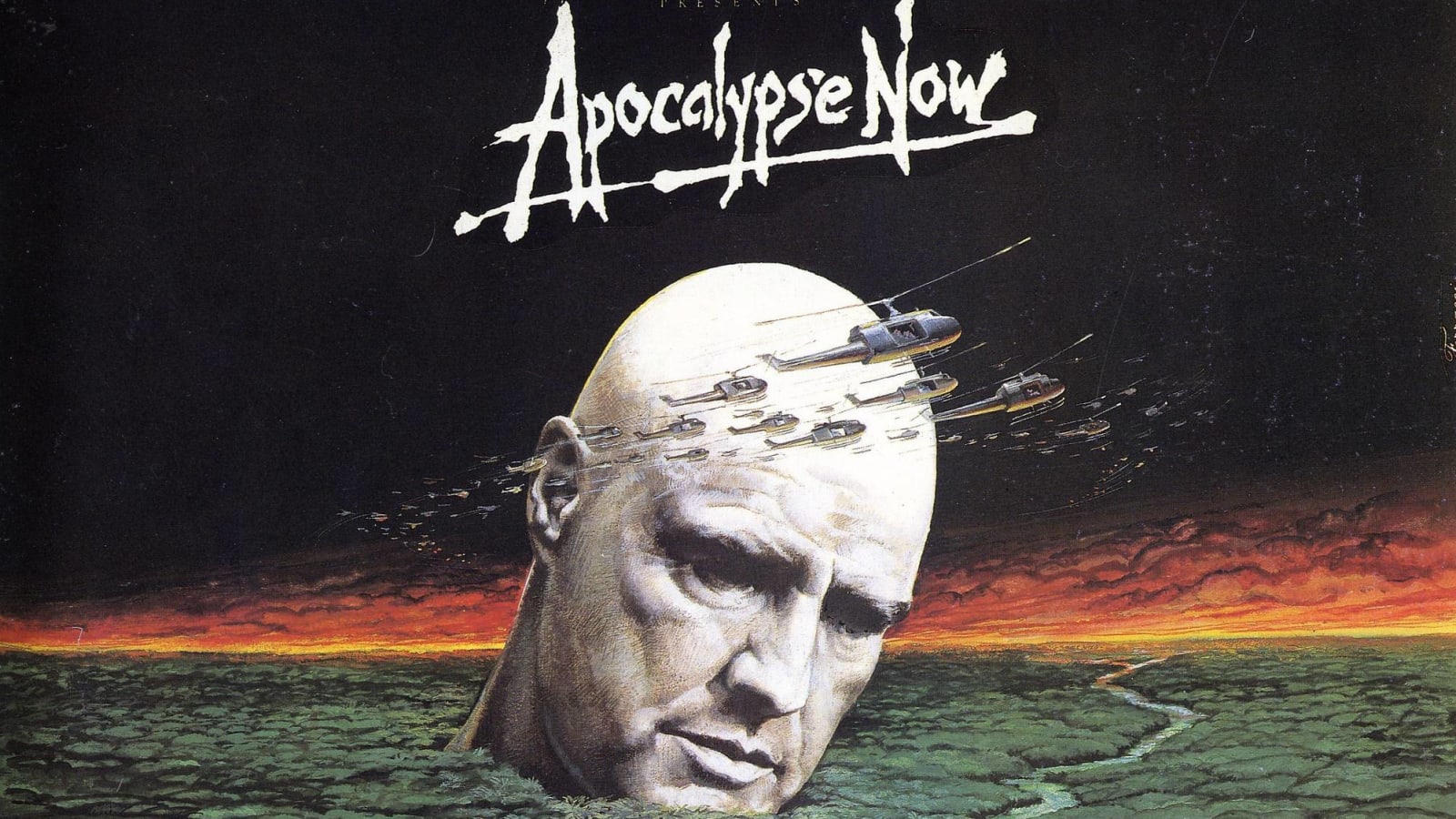
20 facts you might not know about 'Apocalypse Now'
Francis Ford Coppola set out to make a movie about the chaos of the Vietnam War when the wound of the conflict was still fresh. He did not set out for a production that ended up being nearly as chaotic as the war itself. And yet, he persevered and wound up with yet another masterpiece to his name (arguably his last one as well). Many consider “Apocalypse Now” the best war movie ever made. The story of the film is arguably just as fascinating as the film itself, though, so here are a handful of facts about Coppola’s “Apocalypse Now” adventure.
The movie is a loose adaptation of a novel
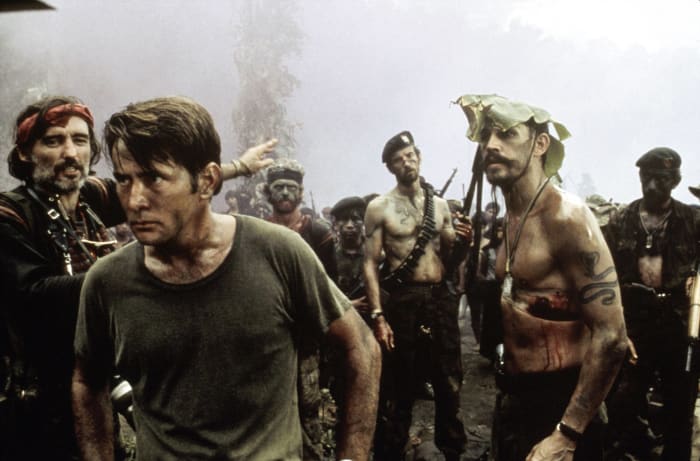
At its core, “Apocalypse Now” is about a man at the end of his rope heading up a river to try and find a military man who has purportedly gone insane and is living as some sort of demigod deep in the heart of seclusion. This is also the plot of Joseph Conrad’s novel “Heart of Darkness.” The novel is the inspiration for the film, which was written by Coppola and John Milius. However, they moved the setting from 19th-century Congo to Vietnam during the war.
Coppola wasn’t initially going to direct
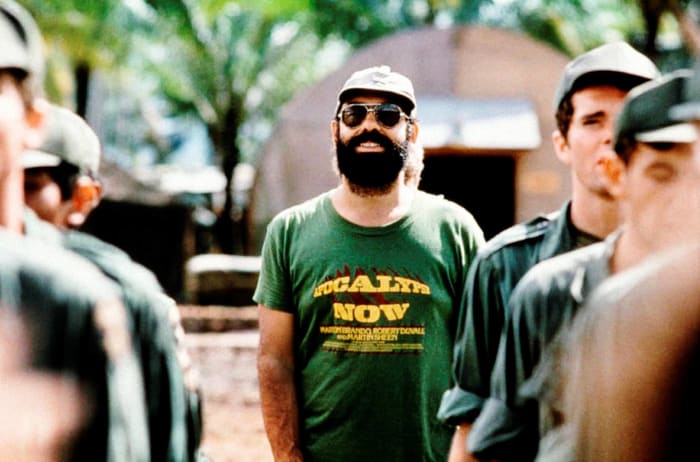
When Milius and Coppola were first putting the project together, they weren’t the only two involved. In fact, Coppola was only planning to produce. The original director was George Lucas. Yes, “Star Wars” mastermind George Lucas. However, Lucas got a little busy and Coppola took over directing.
Lucas still gets a shout out though
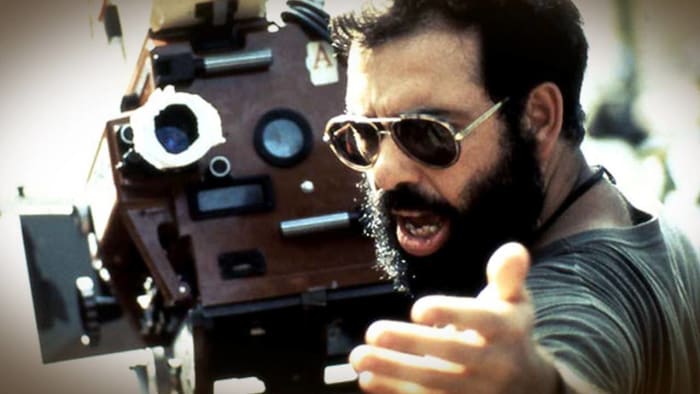
Han Solo himself, Harrison Ford, has a small role in “Apocalypse Now.” He makes an impact, though, because he delivers the line, “Terminate. With extreme prejudice.” Ford’s character’s name is Colonel Lucas, likely a shout-out to the film’s original intended director.
Coppola cameos as well

There is a surreal nature to “Apocalypse Now” at times, and Coppola himself helps make that happen. During a battle on the beach, the American soldiers notice a director shooting footage. The director tells them not to look at the camera and to continue fighting. That TV news director is played by Coppola himself.
Laurence Fishburne lied about his age

Fishburne, then still billed as Larry Fishburne, plays “Mr. Clean,” a 17-year-old who lied his way into enlisting in the army. In reality, Fishburne did something similar. The actor was all of 14 when filming began but said he was older in order to get the part. Of course, by the time the movie came out he was actually 17.
Martin Sheen was not the original Willard

A few names were bandied about for Willard, the ostensible protagonist of the movie, including Steve McQueen and Al Pacino. However, neither of them wanting to uproot their lives and head to the Philippines, where the movie was filmed, for months. Coppola liked Sheen and wanted him for the role, but he already had a movie gig and was not available. With that, Coppola turned to Harvey Keitel. After a few days, though, Coppola was unhappy with Keitel’s performance. Keitel wasn’t happy working on the movie either, so he agreed to leave the film, and Sheen was then hired to replace him.
The shoot went a little longer than expected

When Coppola arrived in the Philippines on March 1, 1976, the expectation was that the shoot would take five months. The plan was to release the movie on April 7, 1977, Coppola’s 38th birthday. Instead, shooting would not end until May 21, 1977. It would not debut at the Cannes Film Festival until May 19, 1979.
There’s a whole documentary about the mess that was filming “Apocalypse Now”
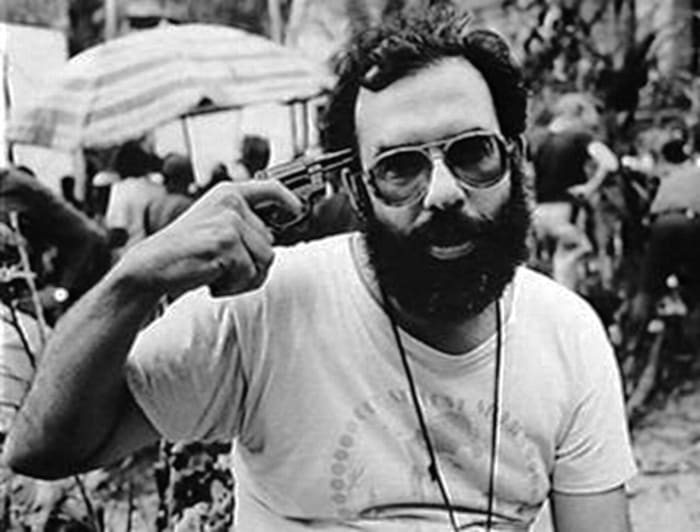
Why did shooting the film take so long? We could do a whole list of facts just about this. However, there’s a great documentary that covers it, and it was filmed in real-time. Coppola’s wife Eleanor was shooting behind-the-scenes footage of “Apocalypse Now” that just happened to capture the pure chaos. In 1990, Eleanor gave her footage to a couple of young filmmakers, including director George Hickenlooper, who turned it into the 1991 documentary “Hearts of Darkness: A Filmmaker’s Apocalypse.” Many consider it the best documentary about movie-making ever.
Martin Sheen had a rough 36th birthday

You know the scene at the beginning of “Apocalypse Now” where Willard is in a hotel room melting down, culminating in him punching a mirror? That was filmed on Sheen’s 36th birthday. The staggering in that scene is authentic, as the actor was incredibly drunk while filming the scene and took it upon himself to punch the mirror. That mirror was not a prop, and Sheen cut his hand open. However, he insisted on continuing to film and made use of it.
Oh, and Sheen had a heart attack as well

A bloody hand was not the worst of Sheen’s health concerns in the movie. Later during filming, Sheen suffered a heart attack. Again, remember he was only 36 at the time. However, worried that the overbudget, behind-schedule movie was already in trouble, he told people he had just suffered heatstroke instead. His brother Joe Estevez was used as a stand-in for filming until Sheen recovered.
The poetry of T.S. Eliot plays a big role in the movie

These days, T.S. Eliot is perhaps best remembered for writing the poem that inspired “Cats.” However, his work isn’t always that fluffy. A couple of Eliot’s poems show up in “Apocalypse Now.” Kurtz reads “The Waste Land” in one part of the movie, and Dennis Hopper’s photojournalist character also quotes “The Love Song of J. Alfred Prufrock.”
Hopper and Brando didn’t get along at all
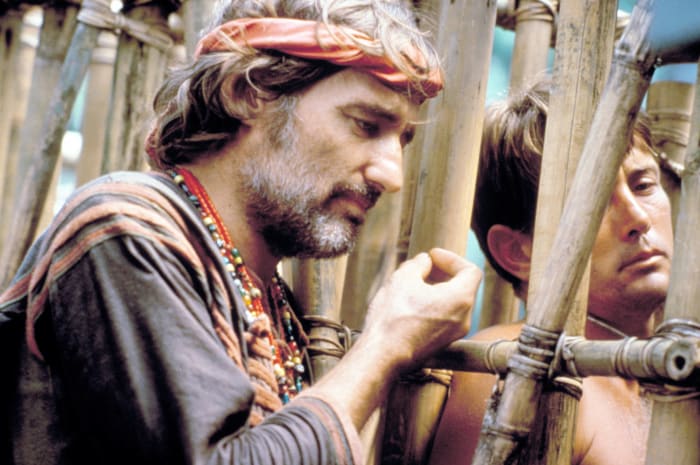
Both Dennis Hopper and Marlon Brando were great actors. They were also combative people in the best of times. Perhaps it’s not surprising they didn’t get along at all when shooting the movie. It seems that the issue was primarily about Hopper driving Brando up a wall with his general insanity. After a while, Brando refused to be on set with Hopper.
A real animal sacrifice was shown

Do you know about the whole “No animals were harmed in the making of this film” thing you see at the end of movies? “Apocalypse Now” does not get that designation. Coppola and his wife had seen the local Ifugao tribe slaughter a water buffalo as part of a ritual previously, and the director decided he wanted to include that in his movie as well. That’s a real water buffalo really being killed by members of the Ifugao tribe. Had the movie been shot in America it would have been illegal, but in the Philippines, it was allowed.
Coppola put it all on the line for the movie
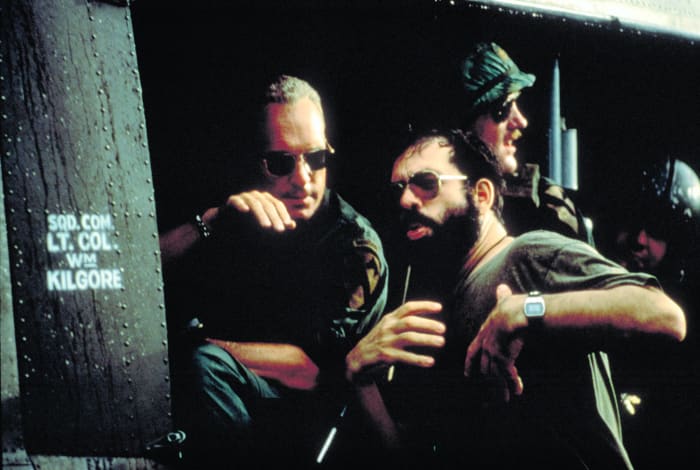
Given the turmoil of the product, it’s perhaps not surprising that the budget ended up more than doubling. Things got so bad that Coppola was willing to put up his car and his house as collateral to get funding for the film and even went so far as to put up his profits from “The Godfather” as well.
It won in Cannes (despite not being finished)

When “Apocalypse Now” debuted at Cannes, it was considered to still be a work in progress by Coppola. The guy really just couldn’t stop tinkering. Despite this fact, the movie was well-received. In fact, it won the Palme d’Or as the best film at Cannes in 1979, in spite of the fact it was the first unfinished film ever screened by the festival.
The movie found a little less success at the Oscars

After all the madness, “Apocalypse Now” proved a hit. Off of a budget of $31 million the movie made $100 million worldwide. It also received eight Oscar nominations, including one for Best Picture and Best Director. However, only two of those nominations turned into wins: Best Sound and Best Cinematography.
Only one actor got an Oscar nomination
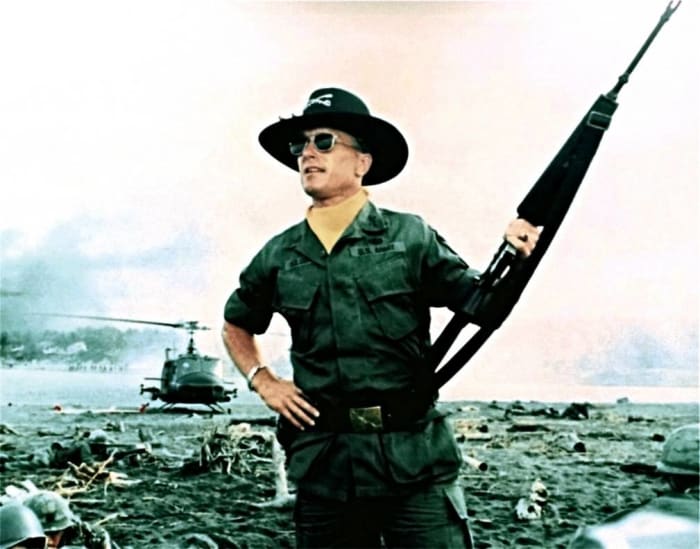
The cast of “Apocalypse Now” is truly impressive. We’ve already mentioned Brando, Sheen, Hopper, and Fishburne. However, none of those actors got an Oscars nomination. Instead, the film's one acting nod went to Robert Duvall, who played Lieutenant Colonel Kilgore. He was nominated for Best Supporting Actor but did not win.
Coppola has released a couple of alternate cuts to the movie

Famously, in 2001 Coppola released “Apocalypse Now Redux,” a new cut of the movie featuring a whopping 49 minutes of new footage. This includes several new scenes, including an entire set-piece at a French plantation that was excised entirely. Coppola wouldn’t leave it there, though. For the 40th anniversary of the movie, Coppola released “Apocalypse Now Final Cut,” his (presumed) last version of the movie. For that version he cut 20 minutes of that extra 49 minutes, leaving us with a three-hour, three-minute film.
A writer was brought on just to handle the narration

The “written by” credit for “Apocalypse Now” went to Milius and Coppola. However, there is also a “narration by” credit for a man named Michael Herr. In 1978, while Coppola was still trying to bring all his footage together, the director called Herr to see if he could work on the movie’s narration. Herr had published a non-fiction book about Vietnam called “Dispatches” that was well received. Herr has said that the narration in the movie was “totally useless,” and he spent a year working on revamping it.
One iconic line came from Milius (and one came from Conrad)
There are a handful of memorable lines in “Apocalypse Now.” Two of them are among the most-iconic, most-quoted, and most-parodied lines of dialogue ever. One is Kurtz’s final words, “The horror! The horror!” The other is Kilgore’s “I love the smell of napalm in the morning,” which AFI named the 12th-best movie quote ever. That line comes from Milius, who says it just popped into his head one day. The other line, though, is a direct quote from Conrad’s novel.
Chris Morgan is a sports and pop culture writer and the author of the books The Comic Galaxy of Mystery Science Theater 3000 and The Ash Heap of History. You can follow him on Twitter @ChrisXMorgan.
More must-reads:
Trending in Entertainment
Customize Your Newsletter
 +
+
Get the latest news and rumors, customized to your favorite sports and teams. Emailed daily. Always free!
Use of this website (including any and all parts and
components) constitutes your acceptance of these
Terms of Service and Privacy Policy.

